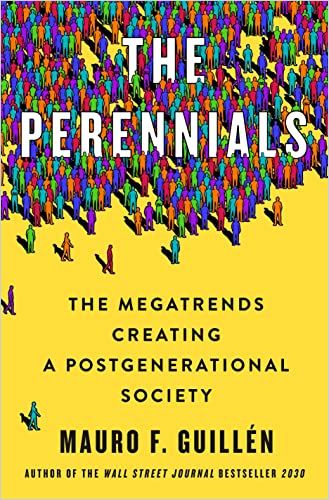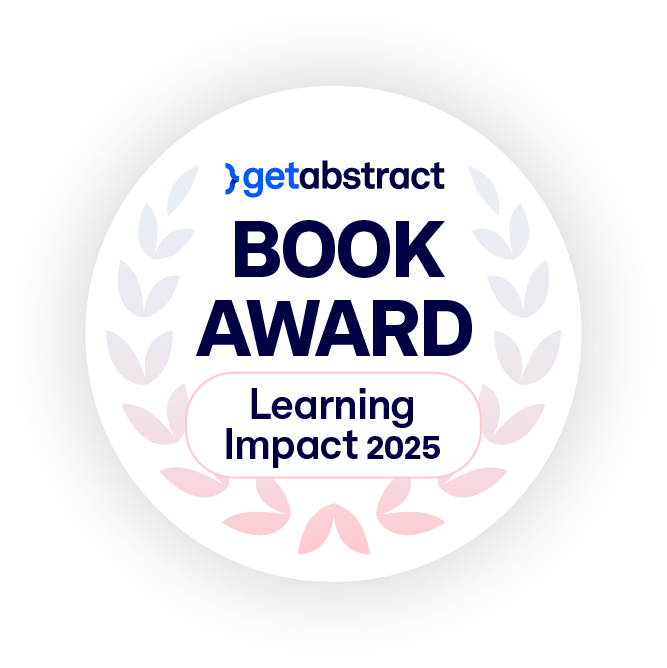Wharton School professor Mauro F. Guillén details a new model of life and work.

A New Life Model
Management professor Mauro F. Guillén argues that the “sequential model” of life — the rigid, one-way path from schooling to career and retirement that working people have followed since the Industrial Revolution — is obsolete and destructive.
Guillén, who also wrote 2030: How Today’s Biggest Trends Will Collide and Reshape the Future of Everything, holds a named professorship in multinational management at the University of Pennsylvania’s Wharton School of Business, where he is Vice Dean of the MBA for Executives program. His online classes have drawn more than 100,000 students.
The Sequential Model of Life
The conventional “sequential model” delineates a one-way path through life in consecutive stages: childhood, school, work, and retirement. This model predicts that the members of different generations — Baby Boomers (born 1946-1964), Millennials (1980-1994), and Generation X (1975-1985) — will occupy separate places along this path.
The sequential model assumes a linear path, a single option, a unique identity at each of the stations in life.Mauro F. Guillén
Substantial demographic, technological, and cultural change has undermined the sequential model and exposed its potential for harm. People live and enjoy good health longer, so expecting productive employees to retire at 65 has become nonsensical. Declining fertility rates have left a smaller pool of younger workers facing the responsibility of funding healthcare and pension programs for longer-lived seniors. As the pace of technological change accelerates, the education that people gain in their youth will lose job-market relevance as they age.
Instead of identifying as Boomers, Millennials, and so on, Guillén reports, people are now opting to be categorized as “Perennials,” a label devised by entrepreneur Gina Pell. Perennials shift periodically to new tracks in their work and their personal lives. Given that flexibility, young people face less pressure than their older counterparts when making momentous decisions about college choices and professional ambitions.
Deciding Under Pressure
Wage-based labor and pensions helped solidify the sequential concept. This model charts a clear route with milestones tied to a person’s age.A society bound to the sequential model looks down on those who don’t conform to age-appropriate stages. Young people must weather early pressure to get on the right path because the sequential model scorns those who don’t enter and exit the expected life stages in a timely manner.
Allow young people to think about their calling in life as a process of experimentation with different jobs and careers, moving back and forth between the classroom and the workplace several times.Mauro F. Guillén
The pressures of correctly navigating a preset sequential path years into the future can endanger teenagers’ mental health and make them vulnerable to stressors, such as substance abuse.Similarly, adults in the working phase of their lives may face a midlife crisis — fear of being stuck in the wrong career amid feelings of disillusionment and failure.
The sequential model’s retirement stage comes with its own emotional sinkholes. Among the most prominent is loneliness. Almost 18% of 60-year-old Americans live alone; that percentage rises to 42% by age 89.
A Post-Generational Model
Human lifespans started increasing dramatically in the 18th century. Today, the average 65-year-old in most wealthy countries can expect to live another 20 to 25 years.With more people living longer after retirement, the costs of benefits and health care for the elderly strain government and family budgets. And, with fertility rates falling, fewer young workers are available to foot the bill. Guillén warns that maintaining these systems could compel older people to delay retirement, and – on a governmental level – it also could reduce old age benefits, make it necessary to accept young workers from other countries, and increase workers’ and employers’ taxes and pension contributions.
In contrast, under the perennial life model, activities formerly consigned to one age span or life stage can occur and recur at various stages. The perennial outlook portrays life as a continuous process of exploring and learning. Instead of being stuck with big decisions made early in life, people will be able to reassess their paths and course-correct as they mature in response to a changing world. Individuals will be able to pursue multiple careers, switching to a new profession periodically, perhaps every couple of decades or so. They can also return to the classroom — physically or via digital platforms — if they need to acquire new skills or knowledge to pursue a fresh path.
The perennial model’s ascendance mirrors a movement toward multigenerational households. The old sequential model was biased toward the concept of the nuclear family, which prescribes that children grow up in their parents’ home and eventually leave to obtain an education and create their own homes and families.
The return of the multigenerational household is…the direct result of increasing longevity, a declining birth rate, the blurring of generational boundaries, the difficulties faced by young people without strong educational credentials, and a yearning for community.Mauro F. Guillén Mauro F. Guillén Mauro F. Guillén Mauro F. Guillén Mauro F. Guillén Mauro F. GuillénMauro F. GuillénMauro F. Guillén
Single-parent households are increasingly common worldwide, and the number of people living alone is also rising. On the other hand, multigenerational households, which were common for centuries before the ascension of the nuclear family, are making a comeback. In 1971, 7% of US households included more than two generations.
A trend toward multigenerational workplaces accompanies this household demographic shift. Guillén counsels that companies should encourage collaboration among multiple age groups, and, indeed, some firms have pioneered efforts to foster multigenerational workplaces. For example, automaker BMW has structured its operations so that up to five generations of employees work together.
Perennial Needs
Society also must reimagine traditional educational institutions. Currently, education separates younger and older students. Instead of shunting older learners into adult or senior programs, educational institutions should foster “intergenerational” education.
Workers must learn skills that apply in an environment of continuous change. For instance, adaptability will become a crucial “meta-skill.”
Postgenerational ways of living, learning, working, and consuming are driven by powerful forces that are becoming stronger by the day.Mauro F. Guillén
Governments should streamline regulations that govern accreditation in various fields to enable workers to switch tracks more quickly. Like private companies, the public sector – the largest employer in most countries – also must revise its long-held focus on seniority.
Moving Forward
Guillén details the emergence of a more fluid “perennial” personal model in which education continues for a lifetime, and people continually revise their career paths. His interesting and useful conclusions about the future of work and education may leave you wishing for additional empirical illumination. Older adults – to whom these ideas might seem remarkably fresh – are the most likely audience to benefit from Guillén’s cataloging of perennial traits and trends, along with emerging high school and college graduates, who might find that this overview of the society they are entering reassures them about the possibility of a more flexible future.














